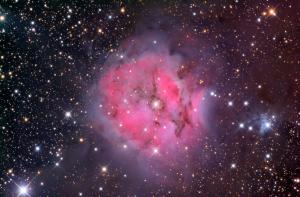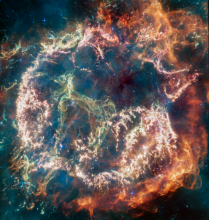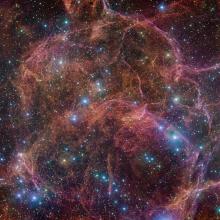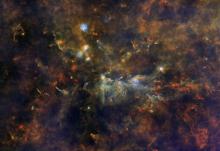Bright clouds of gas intermingle with dark clouds of dust in this image of IC 5146, the Cocoon Nebula. Both regions are giving birth to new stars. The bright regions are energized by hot young stars, while the dark regions have not yet given birth to stars capable of lighting them up. The bright regions appear to lie several hundred light-years closer than the darker ones. [Adam Block/Mount Lemmon SkyCenter/University of Arizona]
You are here
Cocoon Nebula
The universe can fool you. Objects that look like they’re close together can be a good distance apart. And it can take a lot of time and effort to figure that out.
An example is the Cocoon Nebula. It’s a glowing cloud of gas and dust in Cygnus, the swan. It’s half way up the northeastern sky at nightfall, below Deneb, the bright star that marks the swan’s tail.
The nebula is part of a larger complex of gas and dust known as IC 5146. After the Cocoon, its most prominent feature is a dark nebula — a long ribbon of gas and dust. It absorbs the light of the stars behind it, so it looks black. It extends away from the Cocoon like a long tail.
Over the decades, astronomers have come up with many estimates for the distance to the complex — from about 1400 to more than three thousand light-years. And they’ve assumed that the Cocoon and the dark nebula were at the same distance.
But a study a couple of years ago came up with a new finding. Using a space telescope that produces highly accurate distance measurements, it put the dark nebula at about 1900 light-years, and the Cocoon about 700 light-years farther.
Regardless of the distance, both nebulas are giving birth to stars. In the dark cloud, the stars are born along thin filaments that are dozens of light-years long. Eventually, those stars will use up or blow away the dark dust around them, and their region will shine as brightly as the Cocoon Nebula.
Script by Damond Benningfield
Get Premium Audio
Listen to today's episode of StarDate on the web the same day it airs in high-quality streaming audio without any extra ads or announcements. Choose a $8 one-month pass, or listen every day for a year for just $30.







